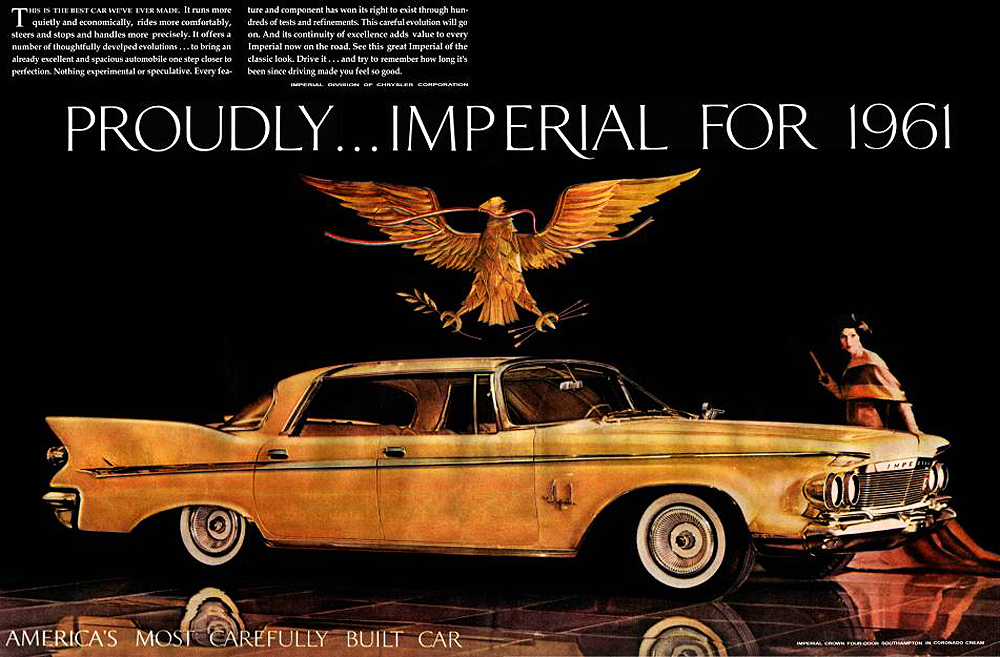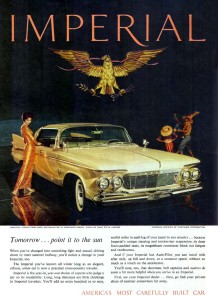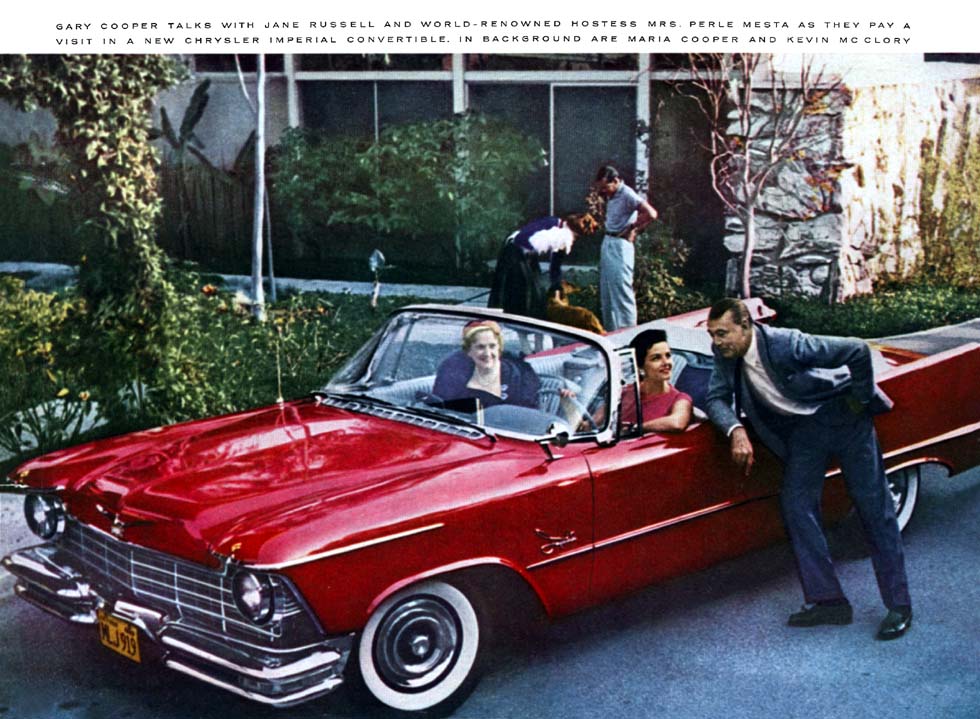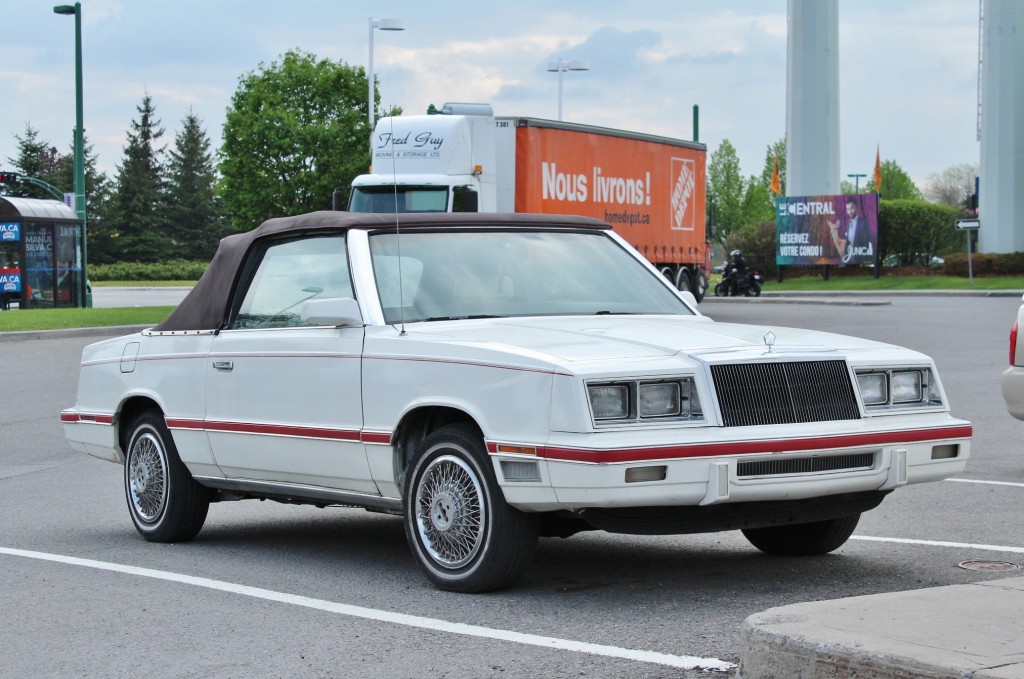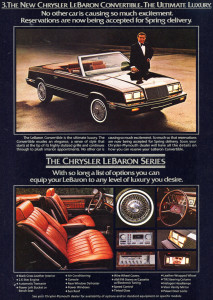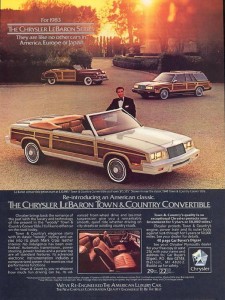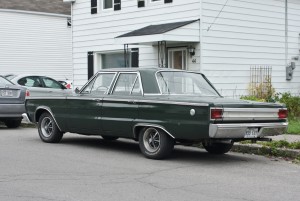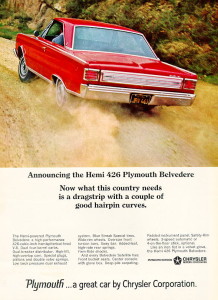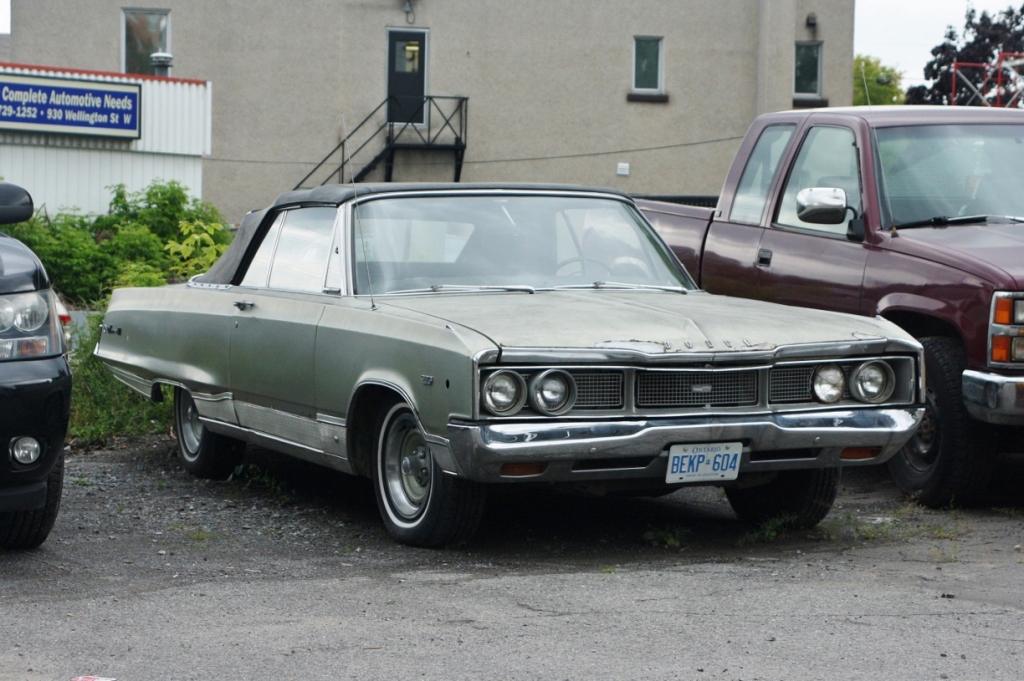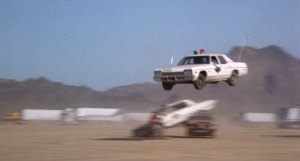There’s something vaguely disturbing about these ads for the 1961 Imperial.
Yes, I just said ‘Imperial’, because at the time, it was a top-end standalone marque of the Chrysler Corporation, not a model of the Chrysler division.
While all the signifiers of mid-century high society are present in the ad – a glamorous women dressed for a night out, minimalist background, GOLD EVERYWHERE – a strange undercurrent runs through these ads.
For some reason, I can’t view these ads without thinking of the Nuremburg Rallies and Nazi architect Albert Speer.
Maybe it’s the grandiose style of it all, but when you add all that glittering, finned excess to the somewhat menacing artwork, the minorities treated as a zoo exhibit, and the eagle, that (in my books) equals a passcode to a dangerous and powerful secret society.
Frankly, I wouldn’t be surprised to see one of these sedans parked outside an Eyes Wide Shut-style Illuminati sex party.
Imperial: the rich uncle that keeps re-appearing
The Imperial name is firmly fixed to the Chrysler brand. After all, it was the ‘affordable luxury’ model that put the fledgling company on the map in 1926.
Since then, it has come and gone from the lineup, re-appearing most recently in the early 1990s as a luxury sedan positioned above the New Yorker. Previously, it had served as a problem-plagued flagship coupe (1981-83).
A monstrous and possibly demonic Imperial concept car was unveiled in 2006, though it came to nothing.
The ’61 model seen here came from (or grew out of) a revered era at Chrysler.
To better allow Chrysler to challenge Lincoln and Cadillac, Imperial was turned into its own range-topping marque in 1955, where it would stay until 1975.
Just like with Plymouth, Dodge and Chrysler, the low, finned ‘Forward Look’ styling of designer Virgil Exner was applied to Imperial in 1957, generating great acclaim, but by the turn of the new decade (after numerous tweaks and add-ons) it was looking awkward and dated.
The dawn of the 1960s was an all-around confusing time for Chrysler design, though Imperial at least didn’t have to contend with downsizing. That didn’t mean a large, long car couldn’t be made to look strange, however.
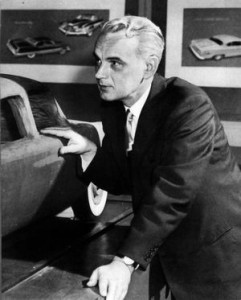
Virgil Exner, ex Chrysler design head (Image via)
1961 brought an edgy new front end for the Imperial, with odd freestanding headlights perched atop the bumper and recessed into a fender cut. Ahead of the rear axle, the look was cohesive and reasonably appealing, but the bat wing tailfins throw the whole design into confused disarray.
Seemingly out of good ideas, Virgil Exner was ousted from his position of head of design in 1962. His successor (Elwood Engel, formerly of Ford) brought Imperial away from the heights of outlandishness and towards a more conventional, simple design.
And so he did. Sharp lines and Lusitania-like length was the name of the game for the rest of the decade, before the ‘fuselage’ bodied Imperials bowed in 1969.
While the Kennedy Era was short-lived, it was memorable for both its experimentation and its focus on style and grace.
Some cars from this era – like the 1961 Continental – became timeless icons of tasteful American design. Others, such as this Imperial, can best be filed under ‘tired relics of 1950s excess’.
In its defence, at least it didn’t start a war.

Albert Speer’s ‘Cathedral of Light’, Germany, 1937 (Image via)
